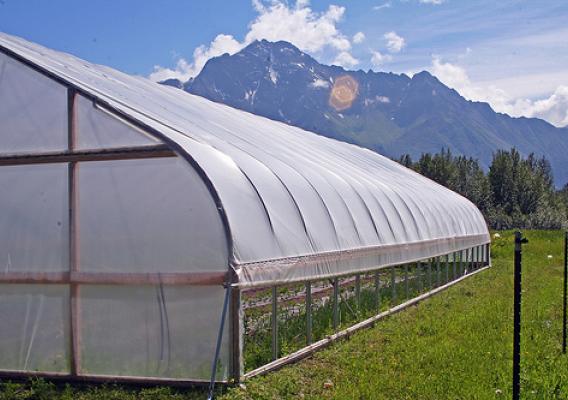On a cold winter day last week, U.S. Senator Debbie Stabenow of Michigan and Garry Lee, Michigan State Conservationist from the Natural Resources Conservation Service (NRCS), visited Detroit's Eastern Market. They were joined by Malik Yakini, Executive Director of the Detroit Black Community Food Security Network, Ashley Atkinson, Co-Director of Keep Growing Detroit and Morse Brown, Board President of the Southeast Michigan Resource Conservation and Development Council. Despite the freezing temperatures that will make growing food a challenge for another few months, Garry and the Senator were there to discuss new support for the Detroit-Wayne County Seasonal High Tunnel Education Initiative (SHEI) which will bring new high tunnels - greenhouse-like structures also known as hoop houses - to Detroit's urban farmers.
Funded by USDA and managed by local organizations, SHEI will train Detroit’s urban growers to install, operate and manage seasonal high tunnels that will conserve natural resources, improve productivity and help them be profitable year round. Easy to build and use, high tunnels were first supported by USDA as a conservation practice in 2010. Since that time, USDA has funded nearly 10,000 across the country. Along with other benefits, high tunnels are providing farmers from Alaska to Baltimore with tools to extend their growing season and provide their communities with fresh, locally-grown produce later into the year.









